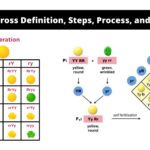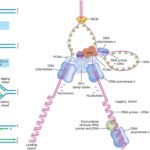Outline the structure and function of a nephron and its associated blood vessels, limited to: (a) the role of the glomerulus in the filtration from the blood of water, glucose, urea and ions (b) the role of the nephron in the reabsorption of all of the glucose, some of the ions and most of the water back into the blood (c) the formation of urine containing urea, excess water and excess ions (details of these processes are not required)
Outline the structure and function of a nephron and its associated blood vessels, limited to: (a) the role of the glomerulus in the filtration from the blood of water, glucose, urea and ions (b) the role of the nephron in the reabsorption of all of the glucose, some of the ions and most of the water back into the blood (c) the formation of urine containing urea, excess water and excess ions (details of these processes are not required)
Please login to submit an answer.
The nephron is the fundamental structural and functional unit of the kidney, responsible for filtering blood and forming urine. It consists of two main components: the renal corpuscle and the renal tubule. Below is an outline of the nephron’s structure and function, focusing on the glomerulus, reabsorption processes, and urine formation.
Structure of the Nephron
- Renal Corpuscle: This component includes the glomerulus, a tuft of capillaries, and Bowman’s capsule, which encases the glomerulus.
- Renal Tubule: This extends from Bowman’s capsule and includes several segments: the proximal convoluted tubule (PCT), loop of Henle, distal convoluted tubule (DCT), and collecting duct.
Function of the Nephron
(a) Role of the Glomerulus in Filtration
The glomerulus plays a critical role in the filtration of blood. As blood enters through the afferent arteriole, it experiences high pressure, which forces water, glucose, urea, and ions through a specialized filtration membrane into Bowman’s capsule. This membrane allows small molecules to pass while retaining larger molecules like proteins and blood cells. The resulting fluid, known as filtrate, contains essential substances needed by the body as well as waste products.
(b) Role of the Nephron in Reabsorption
After filtration, the nephron reabsorbs vital substances back into the bloodstream:
- Proximal Convoluted Tubule (PCT): Approximately 100% of glucose and amino acids, along with a significant portion of water and ions (like sodium), are reabsorbed here. This occurs through active transport mechanisms that utilize energy to move these substances against their concentration gradients.
- Loop of Henle: Further reabsorption occurs here, particularly for sodium and chloride ions. The design of this segment allows for a countercurrent exchange mechanism that helps concentrate urine.
- Distal Convoluted Tubule (DCT): Additional reabsorption takes place in this segment, where hormones can influence the reabsorption rates based on the body’s needs.
Overall, about 67% of water and significant amounts of ions are reabsorbed back into circulation during these processes.
(c) Formation of Urine
The final product is urine, which primarily consists of:
- Urea: A waste product from protein metabolism.
- Excess Water: Any water not needed by the body is excreted.
- Excess Ions: Ions that are not required for bodily functions are also eliminated.
As filtrate moves through the nephron, it undergoes processes of secretion (where additional wastes are added to the filtrate) and further concentration, ultimately leading to urine formation that exits through the collecting ducts into the renal pelvis and subsequently into the ureters for excretion
- Share on Facebook
- Share on Twitter
- Share on LinkedIn
Helpful: 0%




